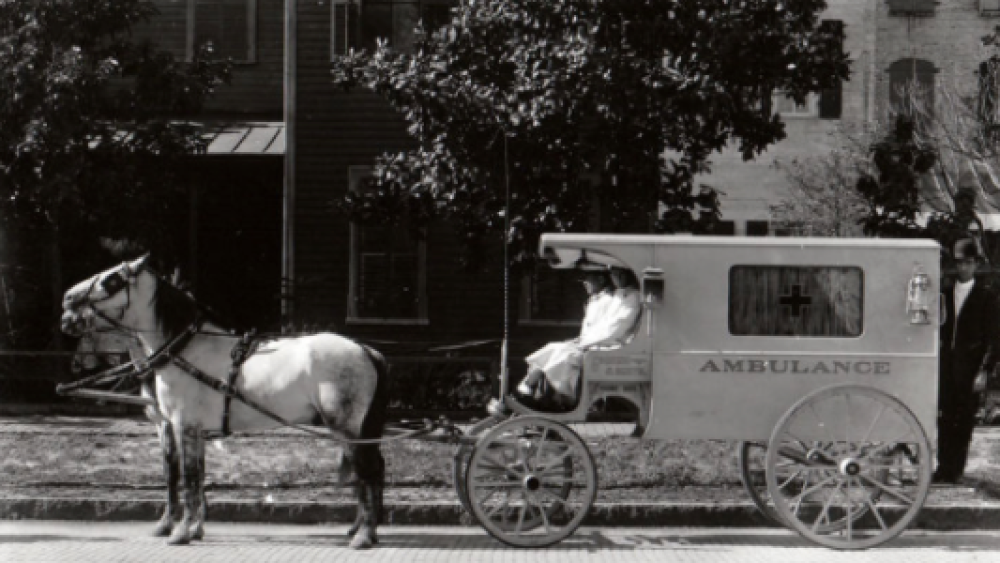In November 2014 we looked at the newly published, NFPA 1917: Standard for Automotive Ambulances, to see what it meant and how we got there.
Developed with consideration of the federal government’s long-standing Standard KKK-A-1822 (commonly referred to as the “triple K standard”) and NFPA 1901: Standard for Automotive Fire Apparatus, NFPA 1917 defines the minimum requirements for the design, performance and testing of new automotive ambulances.
The standard presents general requirements for ambulance design and performance, along with standalone chapters for ambulance components including chassis, patient compartment, low-voltage electrical systems and warning devices, and line voltage electrical systems. NFPA 1917 also specifies provisions for test methods.
Included in that earlier article were differences of opinion that arose during the standard’s development process between NFPA and the Commission on Accreditation of Ambulance Services.
Among the concerns of CAAS and non-fire EMS organizations was a fear that the fire service was taking over EMS and that the standard would require all ambulances to be painted red, have a water tank and be medium-duty ambulances.
Additionally, some of those same organizations expressed fears that they would not have a voice in the standard development, and that they could not afford the price of an ambulances meeting an NFPA standard. At the time NFPA 1917 was published, it was unclear how much more a 1917-compliant ambulance would cost.
Collaborative process
During NFPA 1917’s development, the National Association of State EMS Officials expressed its desire for more of a voice in the development and approval of the new standard. NFPA and NASEMSO held several meetings, hosted by NASEMSO, to inform and educate NASEMSO members about how the NFPA standard development process worked and the details of NFPA 1917. The International Association of Fire Chiefs and NFPA were both actively present in these meetings.
NFPA responded to this unprecedented interest by NASEMSO and its membership by establishing a task group to take a closer look at NFPA 1917. The task group, which included individuals recommended by NASEMSO, met over several days in January 2013 and out of those sessions came an extensive list of public comments that were sent on to NFPA.
Most of those comments were accepted and are scheduled for incorporation into the second edition of NFPA 1917, due later this year.
In April, CAAS released its first standard for ground ambulances, Ground Vehicle Standard, with an effective date of July 1.
“Our broad-based GVS committee spent over two years developing this new consensus standard for ambulances,” Mark Van Arnam, administrator of the GVS standard, said in a prepared statement. “We are very proud of our document and anxious see it rolled out as a successor to the KKK-A-1822 specification, which the U.S. government plans to sunset at some point in the future.”
The consensus group that created the CAAS GVS standard was made up of a large group of professionals including public and private EMS providers, regulators, physicians, equipment manufacturers and other subject matter experts.
Two standards
Having two nationally recognized standards for ground ambulances cannot be viewed as a good thing for EMS, whether that service is provided by the fire service or non-fire services entities. Which one does an EMS agency comply with?
After my side-by-side review of the two documents, it’s clear which standard was developed by individuals who had a good background in matters related to automotive emergency vehicles. NFPA 1917 closely models the comprehensiveness and detail in a consensus standard that the fire service has come to expect from the NFPA in its standards development process.
CAAS’s Ground Vehicle Standard reads more like an outline for what an ambulance should look like and be equipped with. Let’s take a look at how the two standards address a key component of any ambulance, its suspension system.
First, from NFPA 1917, Chapter 5—Chassis, Section 5.8 Suspension.
5.8.1 With the exception of the original equipment manufacturers’ furnished and installed components, the ambulance shall not provide less than the following clearance, measured in accordance with SAE J689: Curbstone Clearance, Approach, Departure and Ramp Breakover Angles.
(1) Approach angle of 10 degrees;
(2) Ramp breakover of 10 degrees; and
(3) Departure angle of 10 degrees.
5.8.2 A traction-control feature shall be provided.
5.8.3 Shock absorbers shall be furnished on the front and rear axles.
5.8.4 Any ambulance with an air-ride suspension shall include an air dryer and automatic heated moisture ejection device to ensure that the air system is provided with dry air to protect the suspension control requirements.
Now, from CAAS’s Ground Vehicle Standard.
C.6.5.5 Suspension Vehicle shall be equipped with laterally matched sets (front and rear) of suspension system components. Components shall have a rated capacity in excess of the load imposed on each member.
Only corrections permitted by the OEM to compensate for lean due to normal spring tolerance variations are permitted. Correction of lean due to imbalance is not permitted.



